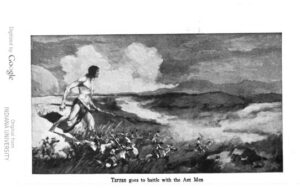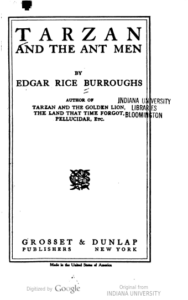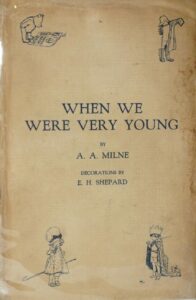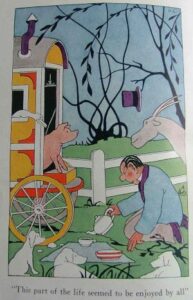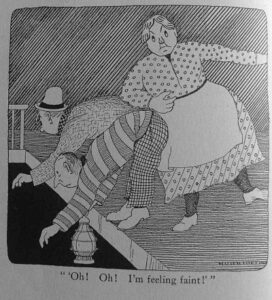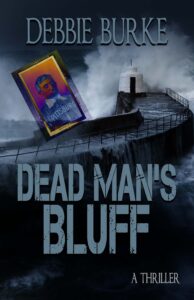by James Scott Bell
@jamesscottbell
 The best selling novelist of all time is Agatha Christie. With estimated sales of between two and four billion, she is miles ahead of #2 (guess who it is…I’ll reveal the answer at the end of this post.*)
The best selling novelist of all time is Agatha Christie. With estimated sales of between two and four billion, she is miles ahead of #2 (guess who it is…I’ll reveal the answer at the end of this post.*)
Dame Agatha, of course, was the queen of the puzzle mystery—i.e., a corpse and a group of suspects, all of whom have a hidden motive or secret, but only one of whom is the culprit (the notable exception being Murder on the Orient Express).
The intricacies of her plots did not spring forth, fully formed like Athena from the forehead of Zeus. Indeed, they required meticulous planning in order to do two essential things.
First, Christie insisted that the clues to the murderer’s identity be on the pages, without tipping off the reader. No easy task! Yet she was adamant that the mystery writer “play fair” with the reader, and that once the mystery was solved, the reader could flip back in the pages to see that the clues were actually there.
Second, her plans allowed her to know where best to plant “red herrings.”
So she was a plotter, a planner.
But she was a pantser in the run-up to the plan! Her pre-plotting involved brainstorming, jotting, talking to herself in notebooks, creating characters, asking questions, testing motives and secrets and other pieces of the puzzle. Finally, she took this jumble and put it into outline form to write the book. In her autobiography, Christie describes this period of time:
There is always, of course, that terrible three weeks, or a month which you have to get through when you are trying to get started on a book. There is no agony like it.
In Agatha Christie’s Secret Notebooks (a comprehensive analysis of 73 handwritten volumes of notes, lists, musings, outlines, and plans for her books) author John Curran writes:
So although it is true that she had no particular method, no tried and true system that she brought with her down the long years of her career, we know this appearance of indiscriminate jotting and plotting is just that—an appearance. And eventually we come to the realization that, in fact, this very randomness is her method; this is how she worked, how she created…
In one of her notebooks, while working on a Poirot mystery called Cat Among the Pigeons, she wrote:
How should all this be approached? In sequence? Or followed up backwards by Hercule Poirot — from disappearance … at school — a possible trivial incident but which is connected with murder? —but murder of whom — and why?
She speculates further on characters (spaces before some question marks are hers):
Who is killed? Girl?
Games mistress?
Maid?
Foreign Mid East ?? who would know girl by sign?
Or a girl who ?
She also used “mundane” activities to allow her subconscious to work. She told an interviewer once that she often got her plots “in the tub, the old-fashioned, rim kind – just sitting there, thinking, undisturbed, and lining the rim with apple cores.”
Eventually, all this “chaos” coalesced into a plot plan, with the author knowing “who done it” from the jump. But because she had so fully considered all the characters, motives, and secrets in her planning, she could easily switch the killer’s ID if she liked.
Her most famous book is probably And Then There Were None. In her autobiography she writes:
I wrote the book after a tremendous amount of planning…It was clear, straightforward, baffling and yet had a perfectly reasonable explanation…the person who was really pleased with it was myself, for I knew better than any critic how difficult it had been.
So there’s a peek into the mind of the world’s bestselling author.
Chaos >> Plan >> Writing
My own process is similar (though I’m a little behind Dame Agatha in sales). I brainstorm, write notes, make mind maps, prod “the boys in the basement,” and type away on what I call a “white-hot document.” The latter is me writing things down as fast as I can—snippets, scene ideas, potential plotlines, possible bad guys, allies, subplots, etc. I come back to this document the next day and highlight the best parts, expand on some things, then do more writing.
I’ll also start laying out my Scrivener cards and signpost scenes, and creating a corkboard of character profiles. In the draft for my next Romeo thriller, I have a sub folder called “Suspects.” I have 11 of them, with headshots I’ve selected online. This makes it easy to look at all of them at once and consider motives and secrets and hidden relationships. I think Agatha Christie would have been proud of me! (Or maybe she would have just patted me on the head and offered me a cookie.)
Finally, I’m ready to write.
So how does this all resonate with you? Are you a chaos-to-plan writer? Or do you prefer writing in the chaos?
For you cozy mystery writers, what is your planning like? Do you need to know who the killer is before you start writing? Do you come up with suspects, secrets, and motives first?
*The #2 best selling novelist of all time is Barbara Cartland, followed by Danielle Steel (source: Wikipedia).



 There’s an old joke about a guy walking into a bar with a squirrel in a cage. The bartender says, “What’s that squirrel doing here?” And the guy says, “Thinking about his next mystery.” The bartender asks what he means, and the guy says, “My squirrel is a mystery writer.”
There’s an old joke about a guy walking into a bar with a squirrel in a cage. The bartender says, “What’s that squirrel doing here?” And the guy says, “Thinking about his next mystery.” The bartender asks what he means, and the guy says, “My squirrel is a mystery writer.” A controversy over an award-winning female thriller author has broken out in Europe. That’s because the female thriller author doesn’t exist. “She” is really three men who have been writing under the pseudonym Carmen Mola. When one of their novels won a million-euro prize, the trio
A controversy over an award-winning female thriller author has broken out in Europe. That’s because the female thriller author doesn’t exist. “She” is really three men who have been writing under the pseudonym Carmen Mola. When one of their novels won a million-euro prize, the trio 